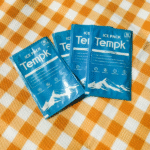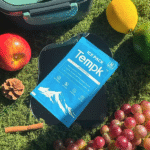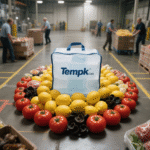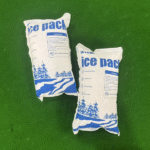What Exactly Is a Dry Ice Pack vs Dry Ice?
Intro: A dry ice pack is not always the same as dry ice. In shipping and cold-chain work, a dry ice pack can mean a polymer-based PCM sheet you hydrate and freeze, or a pouch that actually contains solid CO₂. Knowing which one you have helps you hit the right temperature, avoid hazards, und bleiben Sie konform 2025. This article merges and improves the three drafts you provided.
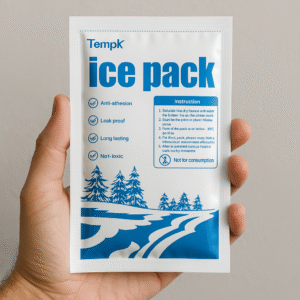
-
Was für ein Trockeneisbeutel is and why the term causes confusion (Langstufe: dry ice pack vs dry ice)
-
When to choose a Trockeneisbeutel or true Trockeneis für deine Spur
-
Wie man packt, Etikett, and handle each refrigerant safely and efficiently
-
2025 Trends: reusable −21 °C PCM, Hybrid -Pack -Outs, und umweltfreundlichere Materialien
What is a dry ice pack and why does the term confuse buyers?
Kurze Antwort: A dry ice pack is not always solid CO₂; it’s often a reusable phase‑change pack designed for set‑point cooling near 0 °C or −21 °C. Some vendors also use “dry ice pack” to describe packaged dry ice. That’s why you’ll see the same phrase on two very different products.
Plain‑English breakdown: If your pack recharges in a freezer and is reusable, you’re holding a PCM sheet or plate—no CO₂ inside. If your pack vents gas and requires gloves and labels, it’s true dry ice (Solid Co₂). This distinction matters when you need chilled (2–8 ° C), gefroren (≈−20 °C), oder ultrakalt (≈−78 °C) Leistung.
Wie funktioniert ein Trockeneisbeutel? (PCM-Blatt) compared with dry ice?
PCM “dry ice pack”: A flexible sheet with super‑absorbent polymer cells that you soak, einfrieren, und wiederverwenden. It freezes like water, holds a steady set‑point (often around −21 °C or 0 °C), and releases no gas.
Trockeneis (Solid Co₂): Carbon dioxide frozen at about −78.5 °C. It skips the liquid phase and turns straight into gas (Sublimation), daher müssen die Pakete entlüftet werden. It delivers very deep cold for long durations but carries frostbite and CO₂ exposure risks.
| Attribut | Trockeneisbeutel (PCM) | Trockeneis (Solid Co₂) | Was es für Sie bedeutet |
|---|---|---|---|
| Core material | Hydrated polymer/PCM | Frozen CO₂ | Pick based on whether you need reusable set‑point cooling or ultra‑cold power |
| Arbeitstemperatur | ~0 °C or ~−21 °C | ~ −78,5 °C | Protect chill/frozen goods vs. keep items rock‑solid frozen |
| Phasenwechsel | Freezes/melts | SULBLIMATE (fest→gas) | No gas vs. CO₂ gas requiring venting |
| Gefahrgutstatus | Generally non‑hazmat | Und 1845, Klasse 9 | Simplified shipping vs. Beschriftung, Ausbildung, Belüftung |
| Wiederverwendung | Reusable hundreds of cycles | Consumed in transit | Lower waste and steady OPEX vs. one‑time use |
| Typische Verwendung | Produzieren, 2–8°C Pharma, D2C frozen meals | Eiscreme, deep‑frozen seafood, ultra‑cold biologics | Match your lane and product tolerance |
Praktische Tipps, die Sie heute bewerben können
-
If the label lists a set‑point (Z.B., –21 ° C.), it’s a dry ice pack (PCM), nicht CO₂.
-
If it mentions UN 1845 or “vent packaging,” you’re dealing with dry ice.
-
Produkt vorkühlen, Kältemittel, and shipper. This reduces load and extends hold time.
-
Für Tiefkühlkost, wrap the payload with a Trockeneisbeutel on all sides for uniform contact.
-
Für Trockeneis, Lassen Sie das Gas immer entweichen; never shrink‑wrap or seal it in an airtight liner.
Beispiel aus der Praxis: A meal‑kit brand replaced two gel bricks with two −21 °C Trockeneisbeutel sheets and improved void fill. Warm‑arrival complaints fell in peak summer while freeze damage remained flat.
When should you choose a dry ice pack vs true dry ice?
Faustregel: Use a dry ice pack for refrigerated and standard frozen lanes; use dry ice for ultra‑cold lanes or when you need CO₂ atmosphere. This balances product quality, compliance burden, und Kosten.
Warum funktioniert es: A Trockeneisbeutel delivers controlled cold near its set‑point, preventing over‑freezing of produce and biologics. Dry ice provides extreme cold and long buffers but triggers hazmat rules and demands ventilation and PPE.
A quick decision framework (check all that apply)
-
Your lowest allowable product temp is ≥ −30 °C → choose a Trockeneisbeutel (–21 ° C.).
-
You need ≤ −40 °C for days → choose Trockeneis.
-
You want reusable, non‑hazmat cooling → choose a Trockeneisbeutel.
-
You benefit from CO₂ atmosphere in‑box → choose Trockeneis.
-
You ship by air with hazmat limits → prefer a Trockeneisbeutel.
| Szenario | Zielbereich | Beste Wahl | Warum | Uhren |
|---|---|---|---|---|
| Produzieren & 2–8°C Pharma | +2 °C bis +8°C | Trockeneisbeutel (0 °C or +5 °C) | Sanft, stetige Kühlung | Pre‑condition packs and shipper |
| D2C frozen desserts (24–48H) | −25 °C to −10 °C | Trockeneisbeutel (–21 ° C.) | Reusable and non‑hazmat | 360° wrap to avoid hotspots |
| Deep‑frozen biologics/seafood | ≤ −40 °C | Trockeneis | Ultra‑cold buffer | Belüftung, PS, UN 1845 labeling |
| Long lanes with delays | −30 °C to −10 °C | Hybrid: Trockeneisbeutel + kleines Trockeneis | Extends hold without over‑freezing | Extra weight; hazmat rules apply |
Packing and compliance essentials (Kopieren und Verwenden)
2025 dry ice pack and cold‑chain trends that matter
Was ist neu in 2025: Wiederverwendbar Trockeneisbeutel Systeme (especially −21 °C plates) are replacing one‑way gel in frozen food lanes. Hybrid-Packouts (PCM + a small dry‑ice charge) help cover delays without over‑freezing sensitive items. Research into biodegradable “jelly ice” and better insulation (VIP -Panels) reduces waste while improving hold time.
Neueste Entwicklungen auf einen Blick
-
Reusable PCM designs: Längeres Leben, cut‑to‑fit sheets ease returns and reverse logistics.
-
Validation by data: More teams size Trockeneisbeutel loads with route data loggers, keine Vermutung.
-
Hybride Strategien: A thin layer of dry ice above PCM adds a safety buffer for carrier hiccups.
-
Greener materials: Emerging hydrogels and recyclable films reduce end‑of‑life impact.
Market insight: Frozen D2C continues to expand, while pharma tightens compliance. Expect stricter carrier enforcement on dry‑ice declarations and broader adoption of non‑hazmat PCM for routine frozen and refrigerated lanes.
Dry ice pack FAQs (and dry ice basics)
Is a dry ice pack the same as dry ice?
NEIN. A Trockeneisbeutel is usually a reusable PCM pack set around 0 °C or −21 °C; dry ice is solid CO₂ at ≈ −78.5 °C.
How long does a dry ice pack stay cold?
Plan for 24–36 h per box with good insulation and full 360° contact; add sheets or better insulation for longer lanes.
Kann ich mit einem Trockeneisbeutel fliegen??
Generally yes—it is not UN 1845. Wenn Sie Trockeneis hinzufügen, follow airline limits and vent the package.
When should I avoid dry ice?
Avoid it with freeze‑sensitive goods and in poorly ventilated spaces. Verwenden Sie a Trockeneisbeutel for controlled chill or standard frozen.
What’s the safest way to handle dry ice?
Tragen Sie Handschuhe und Augenschutz, und für Belüftung sorgen. Never seal dry ice in a rigid airtight container.
Zusammenfassung und nächste Schritte
Key Takeaways: Wählen Sie a Trockeneisbeutel for steady, reusable cooling in chilled and standard frozen lanes; wählen Trockeneis for ultra‑cold or multi‑day frozen shipments. Size refrigerant by your lane and insulation—not guesswork. Hybrid pack‑outs can bridge gaps when delays occur.
Aktionsplan: Map each SKU to an allowable temperature band, select the lightest‑hazard refrigerant that meets it, validate with data loggers in both summer and winter, and standardize SOPs by lane length. Aufruf zum Handeln: Get a tailored pack‑out plan and a hold‑time estimate for your lanes—contact Tempk today.
Über Tempk
Tempk designs cold‑chain packaging you can deploy quickly and at scale. Our portfolio includes reusable Trockeneisbeutel Teller (–21 ° C., +5 ° C, +18/22 ° C), validierte Versender, and hybrid pack‑out SOPs. We build to food‑grade standards and focus on low‑waste, high‑reliability performance.

















